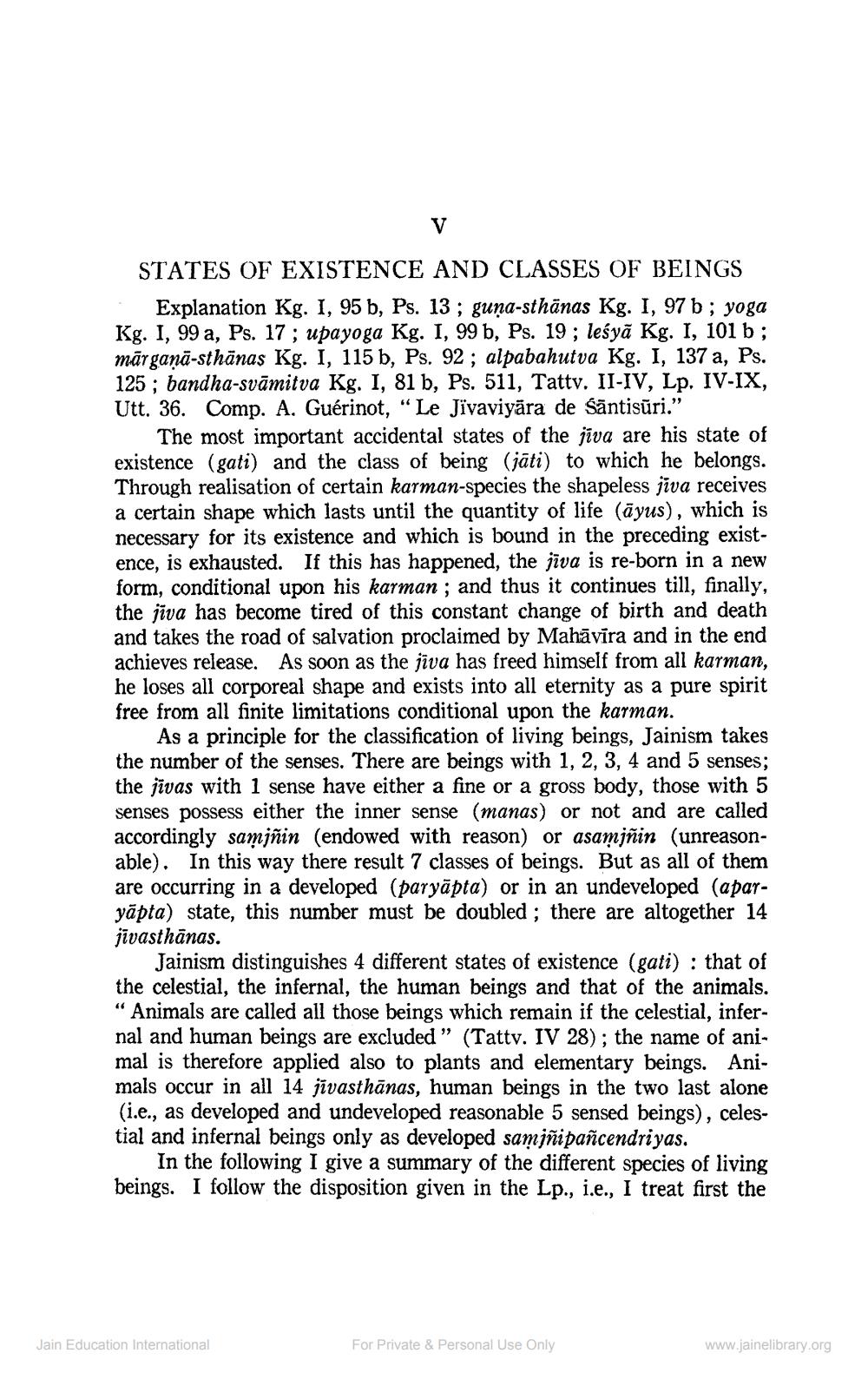________________
STATES OF EXISTENCE AND CLASSES OF BEINGS
Explanation Kg. I, 95 b, Ps. 13; guņa-sthānas Kg. I, 97 b; yoga Kg. I, 99 a, Ps. 17 ; upayoga Kg. I, 99 b, Ps. 19; leśyā Kg. I, 101 b; mārganā-sthānas Kg. I, 115 b, Ps. 92; alpabahutva Kg. I, 137 a, Ps. 125 ; bandha-svāmitva Kg. I, 81 b, Ps. 511, Tattv. II-IV, Lp. IV-IX, Utt. 36. Comp. A. Guérinot, “Le Jïvaviyara de Sāntisūri."
The most important accidental states of the jiva are his state of existence (gati) and the class of being (jāti) to which he belongs. Through realisation of certain karman-species the shapeless jiva receives a certain shape which lasts until the quantity of life (äyus), which is necessary for its existence and which is bound in the preceding existence, is exhausted. If this has happened, the jīva is re-born in a new form, conditional upon his karman ; and thus it continues till, finally, the jīva has become tired of this constant change of birth and death and takes the road of salvation proclaimed by Mahāvīra and in the end achieves release. As soon as the jīva has freed himself from all karman, he loses all corporeal shape and exists into all eternity as a pure spirit free from all finite limitations conditional upon the karman.
As a principle for the classification of living beings, Jainism takes the number of the senses. There are beings with 1, 2, 3, 4 and 5 senses; the jīvas with 1 sense have either a fine or a gross body, those with 5 senses possess either the inner sense (manas) or not and are called accordingly samjñin (endowed with reason) or asamjñin (unreasonable). In this way there result 7 classes of beings. But as all of them are occurring in a developed (paryāpta) or in an undeveloped (aparyāpta) state, this number must be doubled ; there are altogether 14 jīvasthānas.
Jainism distinguishes 4 different states of existence (gati) : that of the celestial, the infernal, the human beings and that of the animals. "Animals are called all those beings which remain if the celestial, infernal and human beings are excluded” (Tattv. IV 28); the name of animal is therefore applied also to plants and elementary beings. Animals occur in all 14 jīvasthānas, human beings in the two last alone
(i.e., as developed and undeveloped reasonable 5 sensed beings), celestial and infernal beings only as developed samjñipancendriyas.
In the following I give a summary of the different species of living beings. I follow the disposition given in the Lp., i.e., I treat first the
Jain Education International
For Private & Personal Use Only
www.jainelibrary.org




